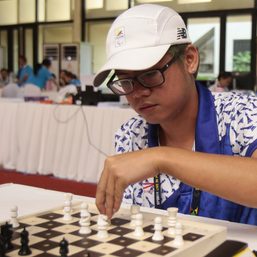SUMMARY
This is AI generated summarization, which may have errors. For context, always refer to the full article.

On Tuesday, October 8, the Supreme Court will begin weighing in on the corruption crisis currently engulfing the country. Rightly so.
If there is any issue that needs the intervention of the Supreme Court, the constitutionality of the Priority Development Assistance Fund should be on top of the list. Later I will argue that the same can be said of the Disbursement Acceleration Program (DAP).
In both cases, big questions about separation of powers, with implications on public accountability, need to be answered, and in the end, only the Supreme Court can answer them.
The 1987 Constitution is very clear about the role of the judiciary in our republic. Article 8, Section 1 states: “The judicial power shall be vested in one Supreme Court and in such lower courts as may be established by law.”
The same provision further introduces what scholars have called expanded judicial power of review: “Judicial power includes the duty of the courts of justice to settle actual controversies involving rights which are legally demandable and enforceable, and to determine whether or not there has been a grave abuse of discretion amounting to lack or excess of jurisdiction on the part of any branch or instrumentality of the Government.”
Every first year law student knows the provenance of the power of judicial review. We borrowed it from the United States where the Supreme Court in the 1807 case of Marbury vs Madison effectively elevated itself higher, at least in interpreting the Constitution, than the executive and legislative branches. According itself this role of constitutional umpire, according to the US Supreme Court then, was a natural consequence of being the judge of disputes.
Chief Justice Marshall’s immortal words, which I require my constitutional law students to memorize, are self-explanatory: “It is emphatically the province and duty of the judicial department to say what the law is. Those who apply the rule to particular cases, must of necessity expound and interpret that rule. If two laws conflict with each other, the courts must decide on the operation of each. So if a law be in opposition to the constitution; if both the law and the constitution apply to a particular case, so that the court must either decide that case conformably to the law, disregarding the constitution; or conformably to the constitution, disregarding the law; the court must determine which of these conflicting rules governs the case. This is of the very essence of judicial duty.”
Final arbiter
In 1936, in the case of Angara vs Election Commission, the Philippine Supreme Court — speaking through the great Justice Jose P. Laurel (who later became president) — defined the power of judicial review in our system. Laurel described the Supreme Court “as the final arbiter, effectively checks the other departments in the exercise of its power to determine the law, and hence to declare executive and legislative acts void if violative of the Constitution.”
He pointed out that “the Constitution has blocked out with deft strokes and in bold lines, allotment of power to the executive, the legislative and the judicial departments of the government. The overlapping and interlacing of functions and duties between the several departments, however, sometimes makes it hard to say just where one leaves off and the other begins. In times of social disquietude or political excitement, the great landmarks of the Constitution are apt to be forgotten or marred, if not entirely obliterated. In cases of conflict, the judicial department is the only constitutional organ which can be called upon to determine the proper allocation of powers between the several departments and among the integral or constituent units thereof.”
During the martial law years, President Marcos curtailed this power and shamefully the Court frequently acquiesced by using the doctrine of political questions, i.e., that there are controversies better left to the political branches of government or to the people to decide and that, in such cases, the Court must stay out of the picture.
The Marcos experience is what prompted the 1986 Constitutional Commission to introduce the expanded power of judicial review. The framers, which included former Chief Justice Roberto Concepcion (known for standing up against Marcos in the early days of martial law) and the country’s most prominent constitutionalist Fr. Joaquin Bernas SJ, specifically intended this provision so that the Supreme Court will not shy away from the big questions of the day on the excuse of political questions.
This, then, is likely to be the first question that the Supreme Court will tackle in the oral arguments on the PDAF case that has been filed before it. Should it even get involved as this clearly, is a matter involving Congress and the President who have agreed to set up this budgetary mechanism called the PDAF? Is this a policy question that is best left to the political branches or is there a constitutional principle that has been breached in the formulation of the PDAF as well as in its execution?
‘Black-letter law’ vs ‘operational code’
This is not the first time that the Supreme Court will look at the constitutionality of the pork barrel. In the case of Philippine Constitution Association v Enriquez, decided in 1994, the Supreme Court concluded that the Countrywide Development Fund (CDF), a fund similar to the PDAF, was constitutional because the authority given to the members of Congress under it was “merely recommendatory.” In fact, the Court praised The CDF as a way of equalizing the unequal.
The impression that legislators only make recommendations was not entirely accurate. We saw this in the anomalies in the CDF exposed by the Philippine Daily Inquirer, which benefited from revelations by the late Marikina Congressman Romeo Candazo. We see that again in the current PDAF scandal where legislators actually meddle with implementation, among others, we know now, by endorsing favored contractors and/or NGOs.
As it deliberates on the case before it, the Supreme Court might benefit from the distinction that Professor Michael Reisman of Yale Law School (disclosure: Reisman was my mentor in that school), makes between “black-letter law” (the official policies, rules and regulations) and the “operational code” (how things really work).
It is likely that the PDAF, as the CDF then, would pass scrutiny if one limited itself to the black letter law. That is the defense of the legislators who have been criminally accused: “we were only endorsing NGOs;” it’s the fault of the agencies.”
If the operational code were reviewed by looking at actual implementation, and thankfully we have the reports of the Commission on Audit, among others, to do that systematically, the result could be different. For example, is there any legal significance to the fact that endorsements by legislators were required before releases of funds were made?
Patronage politics?
Even before this recent scam exploded, so many safeguards were already in place, including the Procurement Act or R.A. 9184 and many COA issuances, yet the operators still managed to circumvent them with impunity. Looking at the reasons why this happened might be helpful as the Court decides the case.
When the PDAF scam first came to light, I proposed a 3-pronged control-entitlement test for the abolition of the pork barrel or for its authentic reform if it cannot be totally eliminated: (1) How is the project to be decided? Is it solely the legislator’s discretion? (2) Is there an entitlement to the fund? In other words, does the legislator believe that s/he has control of the fund? (3) Does the legislator have a say on who implements the project and how it is implemented? That is, can s/he influence who the agency/implementor/contractor will be?
A yes answer to these questions means there is no iron wall between the executive and legislative branches of government and that patronage politics lives on.
DAP
Turning now to the legality of the Disbursement Acceleration Program (DAP), it is clear that the weight of legal opinion is on the side of unconstitutionality. Sen Miriam Santiago, for example, has asserted that the Constitution “allows fund transfers, only if there are savings, meaning that the project was completed, and yet the appropriation was not exhausted; but there are no savings if a project was merely deferred.”
She observed that it appeared that DAP funds were taken from alleged slow-moving projects. “If so, no savings were generated, and therefore DAP is illegal.” She was seconded by former Sen Joker Arroyo who said that the “Disbursement Acceleration Program (DAP) was neither provided for under the General Appropriations Act nor in any of the country’s laws.
Professor Benjamin Diokno, a globally recognized budget expert and himself a former budget secretary, has spoken very strongly against the DAP. In a television interview reported on by Rappler, he observed that the realignment of savings to non-existing budget items in the General Appropriations Act resulted in the creation of “a budget within a budget” without Congressional action.
Rappler reported Diokno as saying, “Ito bastusan eh… Ang ginawa ng executive is that they sliced and diced the budget and repackaged it and came out with a new budget which is P72-billion worth.” (What the government did was rude. The executive branch sliced and diced the budget and repackaged it and came out with a new budget which is P72-billion worth.)
In the same interview on ANC, Fr Joaquin Bernas agreed with Diokno that savings should only be spent to augment existing line items in the budget. Bernas also identified the enabling conditions for realigning savings. “One, you have to have savings. Two, if these savings are to be transferred, they have to be transferred in the same department.”
On the other side of the issue, Bernas’ colleague in the Ateneo Law School, Atty Mel Sta. Maria has a different take on the matter, saying that it is nothing else but the disbursement of funds sourced from savings of a particular item to fund a deficit in another item for the purpose of immediately accomplishing a priority activity.
According to Sta. Maria, this makes the DAP legal and constitutional, in his words: “The only transfer that cannot be made in this process is a transfer of saved-funds from one great government department to another. Hence, the President cannot transfer executive funds to the judiciary, the judiciary to the executive, the judiciary to the legislature, the legislature to the executive, the executive to the legislature. To do so would be unconstitutional. But within the executive branch, which is composed of so many departments, the President may do so pursuant to the Constitution and the Administrative Code. In fact, the Constitution also explicitly grants the Chief Justice, the Senate President, the Speaker of the House, the head of Constitutional bodies the same powers within their departments.”
My take
I have been asked by many where I stand on this issue, whether I will go with the more senior and famous constitutional minds such as Bernas, Santiago and Arroyo, or with Sta. Maria’s interpretation.
On the case of DAP disbursement decisions made purely by the executive branch, there is a color of legality precisely because the President has the power to realign savings. However, with respect to those DAP disbursements made upon recommendation by senators and other legislators, I will draw the line and conclude that these were illegal.
This is consistent with what happened to funds allocated to legislators through the PDAF and explains why again corruption rears its ugly head in such DAP disbursements. This is again because of the inherent fault of the legislators being allowed to cross the line with respect to implementation.
In the case of the PDAF — that this was part of the approved budget and the link between legislator and funds was clear — this was understandable even if wrong. But in the case of the DAP, there is no rationale at all for allowing the legislators to identify projects. What happened here? Why did the executive department allow this to happen?
In this sense, I have come to the conclusion that the DAP overall can be legally defended but what cannot be justified legally, and I think ethically, given the context of the Corona conviction, is allowing the senators to identify even more projects than they already did with their PDAF. That reeks of quid pro quo. I do not think it is criminal bribery but it does not look or smell right.
Broken system
That we even find ourselves in this debate is symptomatic of how broken our system of government is. It indicates a complete breakdown of controls, which puts into question our very system of government. The virulence of corruption has seriously tainted vital government institutions — among others, Congress, executive departments, agencies, government and controlled corporations and local government units.
It also puts into question the existing auditing, budgeting processes, procedures and control mechanisms. With cases now being filed, our justice system will also be put to the test. The Pandora’s Box has been fully opened. And if the P10-billion Napoles pork barrel and the Malampaya funds scandals are just a tip of the iceberg, chances are, more gargantuan scams involving public funds are waiting to be uncovered.
For all the moral anguish and outrage that Filipinos are going through, I see a silver lining here. The pain could have a cathartic effect. Had these scandals not been unearthed, the corrupt would continue with their merry ways, wrecking more serious havoc along the way. But now, the guilty must be quaking in their feet. The fuse ignited by Benhur Luy and the other whistleblowers will definitely result in an explosion that will rack the country to its very foundations. But in the end, it will give us an opportunity to rectify our broken system of governance; and, if we learn from all of this, it is a precious opportunity to correct past mistakes to allow for a better society to emerge.
Or we could go off the cliff and never have a chance like this again. – Rappler.com
Add a comment
How does this make you feel?










There are no comments yet. Add your comment to start the conversation.